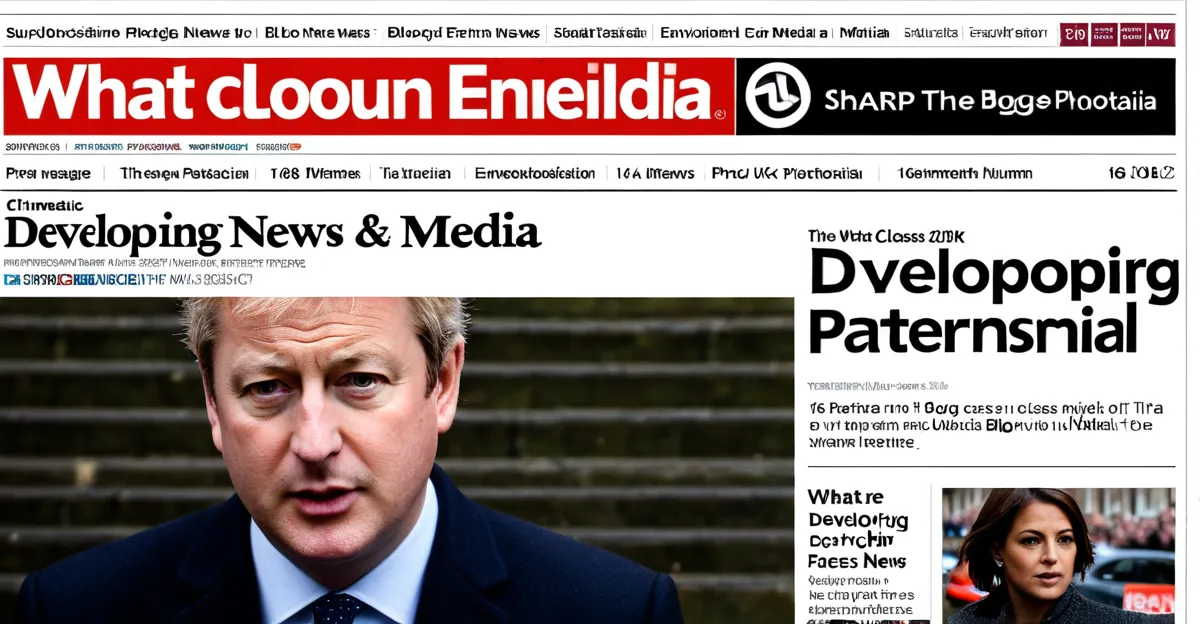Key Developments Reshaping UK News Media
Emerging trends in UK news media highlight a profound digital transformation changing how audiences consume news. Major outlets have adopted digital-first strategies, prioritising online content to meet the rapid shift from traditional print to digital platforms. This adjustment reflects evolving media consumption habits, where immediacy and accessibility dominate.
Audiences now favour multimedia and interactive reporting formats, combining text, video, audio, and graphics to create engaging experiences. For instance, digital storytelling often integrates real-time updates and interactive maps, offering users dynamic insights beyond static articles.
This might interest you : How are UK transportation systems adapting to sustainability goals?
This digital transformation also encourages newsrooms to rethink content delivery methods. Publishers invest in mobile-friendly platforms and social media integration, aligning with consumers’ preference for accessing news on smartphones or tablets. The shift supports a broader reach while addressing the growing demand for personalised news experiences.
In sum, emerging trends in UK news media underscore a landscape rapidly evolving to embrace digital innovation and changing consumption patterns. These developments ensure news remains relevant and accessible amid ongoing technological and cultural shifts.
Have you seen this : How is climate change influencing UK news reporting?
The Influence of Social Media and Alternative Platforms
Social media UK news channels have become indispensable in shaping contemporary news consumption habits. Platforms like Twitter, Facebook, and Instagram serve not only as distribution networks but also as spaces where news is actively discussed and disseminated. This shift alters the traditional gatekeeping roles of established outlets, making news more immediate and interactive.
The rapid expansion of news on social media encourages major publishers to adapt by tailoring content specifically for these formats. For example, snappy headlines, video snippets, and live streams are optimised for quick consumption and sharing, fitting seamlessly into users’ scrolling habits. This reflects broader media platforms UK trends, where accessibility and engagement drive content strategy.
Alternative news sources, including influencers and podcasts, further diversify how audiences receive information. Podcasts offer in-depth analysis and storytelling that traditional formats sometimes lack, while influencers can shape public opinion through personalised narratives. This diversification responds directly to changing news consumption habits, offering options beyond conventional journalism.
Traditional newsrooms increasingly integrate these platforms within their workflows, embracing platform-driven journalism. This evolution highlights a landscape where social media’s influence is central to reaching and retaining audiences amid shifting preferences.
Subscription Models and Revenue Innovation
As news paywalls UK become more common, publishers are exploring diverse subscription models to secure newsroom sustainability. Paywalls range from strict access barriers to flexible freemium content, allowing users to sample before subscribing. This gradual exposure can increase conversion rates and retain wider audiences while ensuring revenue streams.
Many outlets experiment beyond subscriptions, incorporating memberships, donations, and bundled services combining news with other digital offerings. These models provide readers with a sense of community and value, fostering loyalty. For example, memberships may include exclusive newsletters or event access, adding tangible benefits for committed users.
Advertising strategies also evolve alongside subscriptions. Publishers aim to balance reader trust with revenue by reducing intrusive ads and focusing on contextual, privacy-compliant advertising. This approach respects changing attitudes toward data and privacy, aligning monetisation with audience preferences.
This shift to innovative income sources addresses the core challenge: maintaining quality journalism without over-reliance on unstable advertising markets. When asked why news paywalls are crucial, a key reason is their role in funding reliable reporting and enabling newsrooms to invest in digital transformation. The continual refinement of these models positions UK news media for sustainable growth amid evolving consumption habits.
Regulatory Shifts and News Media Policy
In recent years, media regulation UK has undergone significant change, with the Online Safety Bill playing a central role. This legislation aims to hold digital platforms accountable for harmful content, creating a safer online space for users. It imposes new duties on social media companies to remove illegal content promptly and address various forms of online harm.
Concerns about press freedom have been a key focus in discussions around these regulatory shifts. Critics argue that stringent regulations risk undermining journalistic independence by imposing excessive controls on editorial content. Conversely, supporters emphasise that balanced policy frameworks can protect both public interests and the essential role of a free press.
Another important aspect is media plurality. Regulatory measures seek to sustain a diverse and competitive media landscape, ensuring that public service broadcasting remains robust amidst growing commercial pressures. This helps maintain a range of voices and opinions accessible to audiences across the UK.
These policy changes reflect efforts to modernise regulations in line with digital realities, but ongoing debates highlight the challenge of harmonising safety, freedom, and diversity in a rapidly evolving media ecosystem.
Battling Misinformation and Building Trust
Building trust in news has become critical as UK media misinformation proliferates. News organisations are expanding fact-checking initiatives, employing dedicated teams to scrutinise claims and validate information swiftly. This practice reduces the spread of falsehoods and helps audiences discern credible reporting from misleading content.
How do fact-checking initiatives work? Firstly, they cross-reference statements with multiple reliable sources to verify accuracy. When misinformation is detected, corrections and clarifications are promptly published, often paired with transparent explanations of the verification process. This approach not only counters false narratives but also reinforces journalistic accountability.
Beyond fact-checking, media outlets deploy strategies to combat disinformation, such as collaborations with external experts and leveraging AI tools to identify suspicious patterns online. Public trust is further supported by media literacy campaigns that educate audiences to critically evaluate news. These campaigns empower readers to recognise bias and questionable sources, addressing misinformation proactively.
Ultimately, sustaining trust in news relies on transparent communication and consistent delivery of verified content. As misinformation evolves, UK news media’s commitment to robust fact-checking and education forms a crucial defence in preserving informed public discourse.
AI’s Impact on Newsrooms and Content Creation
Artificial Intelligence (AI in journalism UK) is rapidly reshaping newsroom workflows and content production. News organisations increasingly adopt newsroom automation tools that streamline tasks such as data gathering, fact-checking, and even drafting initial article versions. This technology boosts efficiency by reducing repetitive work, allowing journalists to focus on deeper analysis.
Automated reporting is becoming common for covering routine stories—like sports results or financial updates—where structured data feeds generate quick, accurate news items. Moreover, generative content tools enable tailored news experiences, with AI curating articles based on individual preferences, enhancing engagement while accommodating diverse consumption habits.
However, these advances raise ethical questions. Journalists express concern about automated errors, loss of editorial control, and the potential spread of misinformation if AI-generated content is not carefully monitored. Managing these risks involves combining AI capabilities with human oversight to ensure accuracy and maintain trust in news.
In addition, AI supports investigative journalism by analysing large data sets swiftly, helping uncover hidden patterns or connections that humans might miss. This collaboration between AI tools and human expertise illustrates a future where technology complements journalistic integrity while adapting to changing media consumption patterns.






